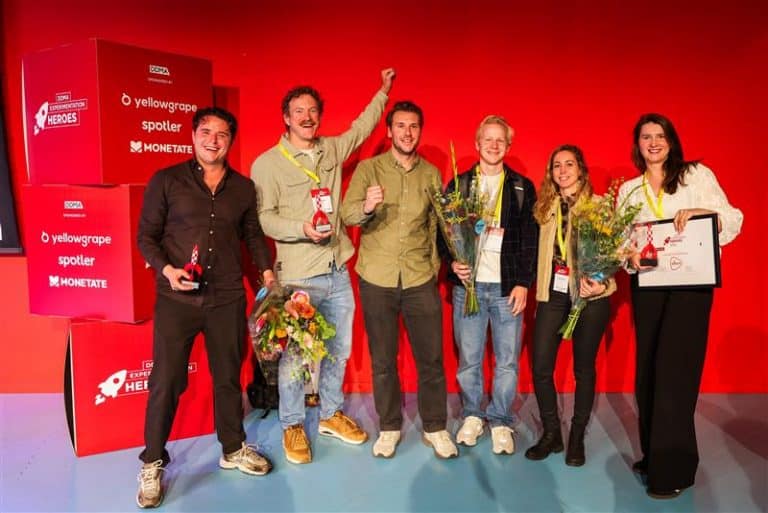Got your tickets for Experimentation Heroes 2024 yet? Get them here.

What is Hybrid Experimentation?
“Hybrid experimentation is an approach that combines client-side and server-side testing under a single platform,” Plokker explains. “More importantly, it enables both client- and server-side to be leveraged simultaneously by different teams, all in support of a unified UX optimization effort.”
As an example, Plokker describes how a product and development team might be working on a server-side optimization for a checkout flow, while at the same time, a marketing or UX team could be iterating on the same platform using client-side functionality. This dual approach, he notes, greatly increases test velocity and reduces the time to achieve meaningful results.
“Hybrid isn’t just about offering both client- and server-side testing in a separate, disjointed way,” he emphasizes. “It’s about delivering all these functions in a unified platform, giving teams a single view into all testing activities, analytics, and reducing potential conflicts across tests.”
The Key Benefits of Hybrid Experimentation
One of the most significant advantages of hybrid experimentation is the flexibility it provides. Plokker points out that by not limiting testing to either the client or server side—or requiring a sequential process—organizations can test and iterate more quickly. “Server-side is great for complex changes, but it often requires more development resources and longer cycles,” he says. “By isolating critical elements to server-side testing and using client-side for rapid iteration, organizations can innovate faster and gain insights in a shorter period.”
Another key advantage lies in performance improvements. “Shifting some aspects of an experiment to the server side reduces the impact on page load times,” Plokker explained. This is particularly important for high-traffic websites, such as in e-commerce, where speed directly affects conversion rates. Hybrid experimentation can also provide more reliable results, as server-side changes are less vulnerable to browser variations and client-side inconsistencies.
Starting with Hybrid Experimentation: Key Considerations
For companies just beginning to explore hybrid experimentation, Plokker offers practical advice on how to start. “Think about integration, team alignment, performance, and privacy from the start,” he advises. He stresses the importance of ensuring that the platform integrates seamlessly with both front-end systems—like CMS, analytics, and tag managers—and backend elements, such as APIs and CDNs.
He also emphasizes the need for teams to be well-organized and agile. “Your teams should be empowered to collaborate across client- and server-side tests, and it’s important to ensure you have the right skill sets in place,” Plokker says. If those capabilities are lacking, he recommends seeking a provider that offers training or consulting services.
Performance is another critical factor to consider. Plokker notes that hybrid platforms relying on JavaScript tags for client-side testing can slow down websites and potentially introduce “flicker” in the user experience. “Choose a hybrid platform that doesn’t use JavaScript, like our unique proxy-based platform at SiteSpect,” he recommends. “This will avoid slow load times and provide a smoother user experience.”
He also underscores the importance of data privacy and security, urging companies to select platforms that comply with regulations such as GDPR. “Ensuring data privacy not only protects customer information but also builds brand trust,” Plokker adds.
Features to Look for in a Hybrid Experimentation Platform
When it comes to choosing the right hybrid experimentation platform, Plokker stresses the significance of finding a solution that offers all functionalities within a single interface. “Throw out anything that separates client-side and server-side into different platforms or interfaces,” he warns. “That separation creates silos, slows testing velocity, and removes the benefits of a true hybrid model.”
In addition, Plokker advised against platforms that rely on JavaScript tags, as they can greatly slow down page load speeds and create flicker. “Look for a natively flicker-free solution,” he recommends, “and make sure the platform supports a wide range of testing methods, such as A/B and multivariate testing, across multiple devices—from web to mobile and IoT.”
Data is another crucial element of a successful hybrid experimentation platform. “Choose a platform that offers comprehensive analytics and reporting tools, and integrates with major analytics providers,” Plokker says. “This will allow you to thoroughly analyse experiment outcomes and track performance in real time.”
Beyond platform capabilities, Plokker emphasizes the importance of fostering an experimentation culture within the organization. “Support and expertise from your vendor are essential for success,” he notes. “Companies should look for vendors with a strong track record, high renewal rates, and credible references, ensuring they have the support needed to run a sustainable and successful hybrid experimentation program.”
In conclusion
In conclusion, Maarten Plokker’s insights reveal that hybrid experimentation offers a powerful and flexible solution for organizations looking to optimize user experiences while maintaining high performance and security standards. “A true hybrid model allows you to innovate faster, deliver better user experiences, and see results more quickly,” he says. “It’s about bringing the best of both client-side and server-side testing together in a way that maximizes value and efficiency.”
Ook interessant

Incrementality Testing: Onmisbaar voor echte inzicht in mediawaarde

Odido, ANWB en PostNL winnen DDMA Experimentation Heroes 2025


